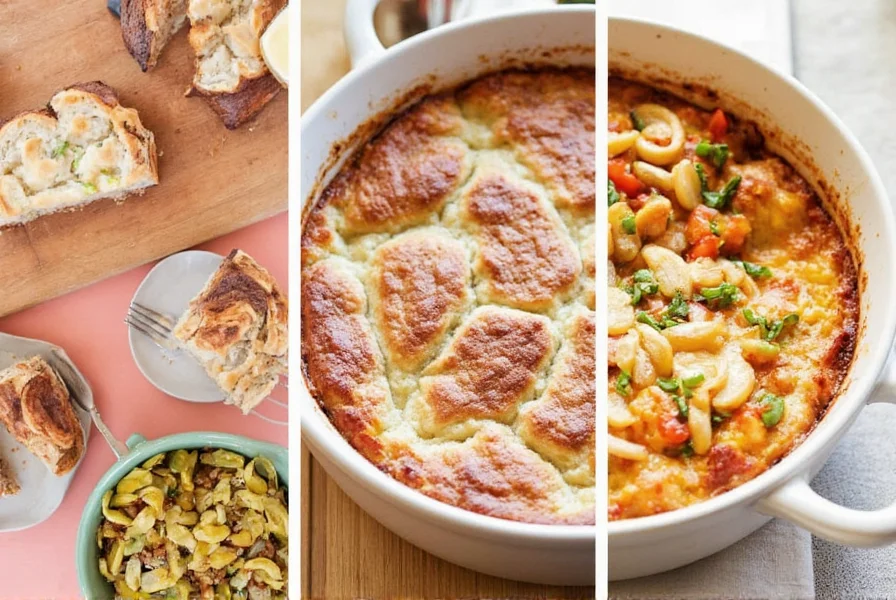When exploring cinnamon dishes, understanding the spice's versatility transforms ordinary recipes into extraordinary culinary experiences. This ancient spice, prized since Egyptian times, contains cinnamaldehyde that creates its distinctive warmth and complexity. Modern research confirms cinnamon's chemical compounds interact beautifully with sugars in baked goods while balancing savory elements in spice blends.
The Science Behind Cinnamon's Culinary Magic
Cinnamon's dual functionality in sweet and savory applications stems from its complex chemical profile. The primary compound, cinnamaldehyde (60-90%), delivers that signature warmth, while eugenol (5-10%) provides subtle clove-like notes. These compounds react differently with various food components:
| Food Component | Cinnamon Interaction | Resulting Flavor Profile |
|---|---|---|
| Sugars | Maillard reaction enhancement | Deeper caramel notes, reduced sweetness perception |
| Fats | Solubility of aromatic compounds | Longer flavor persistence, richer mouthfeel |
| Acids | Balance of volatile compounds | Brightened spice notes, reduced bitterness |
| Proteins | Binding with amino acids | Complex umami development in savory dishes |
This scientific understanding explains why cinnamon works beautifully in unexpected applications like lamb tagine or chocolate mole. The spice doesn't merely add flavor—it transforms the entire flavor architecture of a dish.
Selecting the Right Cinnamon for Your Dish
Not all cinnamon varieties perform equally in different dishes. Understanding these differences prevents culinary disappointment:
- Ceylon cinnamon (True cinnamon): Delicate, citrusy notes ideal for delicate desserts, custards, and beverages. Contains significantly less coumarin (0.004%) making it safer for regular consumption.
- Cassia cinnamon (Most common in US): Bold, intense heat perfect for robust applications like snickerdoodles, spice cakes, and savory rubs. Higher coumarin content (2.1-4.4%) warrants moderation.
- Saigon cinnamon: Highest oil content (1-5%) creates explosive flavor for shortbread and chai. Use 30% less than other varieties.
- Indonesian cinnamon: Earthy, woody profile works well in meat stews and rice dishes.
Professional chefs recommend keeping both Ceylon and cassia varieties on hand for maximum versatility in cinnamon dishes. Always toast whole sticks before grinding to maximize flavor compounds.

Essential Sweet Cinnamon Dishes
Sweet applications represent cinnamon's most familiar territory, but proper technique separates good from exceptional results:
Breakfast Classics
For cinnamon rolls, incorporate 2 teaspoons of cinnamon directly into the dough along with the flour. This creates flavor throughout rather than just in the filling. The ideal cinnamon-to-sugar ratio for fillings is 1:4—too much cinnamon creates bitterness that overwhelms the pastry.
When making cinnamon oatmeal, add the spice during the last 2 minutes of cooking rather than at the beginning. This preserves volatile aromatic compounds that would otherwise evaporate during prolonged heating. Pair with toasted pecans and a touch of orange zest for professional results.
Dessert Mastery
The perfect cinnamon apple pie requires two applications of the spice: 1 teaspoon mixed with the apples to penetrate the fruit, and ½ teaspoon brushed on the crust for aromatic top notes. For optimal texture, toss sliced apples with cinnamon and let rest 15 minutes before adding sugar—this draws out excess moisture that would make the filling soggy.
When creating cinnamon chocolate desserts, use dark chocolate (70% cacao or higher). The bitterness balances cinnamon's warmth, creating a sophisticated flavor profile that works beautifully in pots de crème and flourless cakes.
Surprising Savory Cinnamon Dishes
Cinnamon's savory applications demonstrate its true culinary range, particularly in global cuisines:
Middle Eastern Masterpieces
Moroccan tagines showcase cinnamon's ability to elevate meat dishes. For authentic lamb tagine with prunes, add one 2-inch cinnamon stick during braising—it infuses the entire dish without overwhelming. Remove before serving to prevent bitterness. The cinnamon works synergistically with preserved lemons and olives to create complex sweet-savory balance.
In Persian cuisine, chelo ba morgh (chicken with saffron rice) often includes a single cinnamon stick in the rice pot. This subtle application creates aromatic depth without making the dish taste overtly spicy.
Unexpected Pairings
Cinnamon enhances tomato-based sauces surprisingly well. Add a small piece to simmering marinara for 20 minutes, then remove. The spice reduces perceived acidity while adding warmth that complements garlic and basil.
For cinnamon-spiced roasted vegetables, combine ½ teaspoon cinnamon with cumin and coriander. This blend works particularly well with sweet potatoes, carrots, and beets. The key is applying the spice rub after oiling the vegetables—this prevents burning during roasting.

Avoiding Common Cinnamon Mistakes
Even experienced cooks make these frequent errors with cinnamon dishes:
- Using old spice: Cinnamon loses 50% of its volatile oils within 6 months of grinding. Always buy whole sticks and grind as needed.
- Adding too early: In baking, add ground cinnamon during the final mixing stage to preserve flavor compounds.
- Ignoring regional differences: Mexican mole requires intense Saigon cinnamon, while French pain d'épices needs delicate Ceylon.
- Overlooking storage: Keep cinnamon away from light and heat—store in airtight container in dark cupboard, not next to the stove.
Perfecting Cinnamon Pairings
Understanding complementary flavors creates restaurant-quality cinnamon dishes at home:
- With fruits: Apples, pears, and stone fruits benefit from cinnamon's warmth. For berries, use sparingly as their delicate flavor can be overwhelmed.
- With dairy: Cinnamon creates magical synergy with cream, especially in rice pudding and custards. Add after removing from heat to preserve flavor.
- With chocolate: Dark chocolate (70%+) balances cinnamon's sweetness. For milk chocolate applications, reduce cinnamon by 25%.
- With spices: Cardamom and cinnamon create Middle Eastern magic. In Mexican cuisine, pair with chocolate and a pinch of cayenne.
Mastering these pairings transforms basic cinnamon recipes for fall into sophisticated culinary creations that impress even discerning palates. The key is understanding that cinnamon should enhance, not dominate—a supporting player that elevates other ingredients.
What's the difference between Ceylon and cassia cinnamon for cooking?
Ceylon cinnamon (true cinnamon) has a delicate, citrusy flavor ideal for desserts and sensitive applications, with significantly lower coumarin content. Cassia cinnamon offers bolder, more intense heat perfect for robust dishes like snickerdoodles and meat rubs, but contains higher coumarin levels requiring moderation in regular consumption.
How can I prevent cinnamon from burning when cooking?
To prevent burning, always mix ground cinnamon with other dry ingredients first, never add directly to hot oil. For savory dishes, add whole cinnamon sticks early in cooking and remove before serving. When roasting vegetables, apply cinnamon spice rub after oiling the vegetables to create a protective barrier against high heat.
Which savory dishes benefit most from cinnamon?
Moroccan tagines, Persian rice dishes, Mexican mole sauces, and certain Indian curries benefit significantly from cinnamon. It also enhances tomato-based sauces, roasted root vegetables, and spice rubs for lamb or pork. The key is using appropriate amounts—typically ¼ to ½ teaspoon per serving for ground cinnamon in savory applications.
How should I store cinnamon to maintain freshness?
Store whole cinnamon sticks in an airtight container away from light and heat—never next to the stove. Properly stored, they maintain peak flavor for 1-2 years. Ground cinnamon loses potency much faster (3-6 months), so always buy whole sticks and grind as needed for optimal results in cinnamon dishes.
What are classic cinnamon dessert pairings beyond apple pie?
Beyond apple pie, cinnamon shines in churros with chocolate dipping sauce, rice pudding with raisins, snickerdoodles with turbinado sugar crust, and Persian love cake. For modern twists, try cinnamon in chocolate pots de crème, pear galettes, or as a finishing touch on crème brûlée. The spice also elevates breakfast classics like cinnamon rolls and oatmeal.











 浙公网安备
33010002000092号
浙公网安备
33010002000092号 浙B2-20120091-4
浙B2-20120091-4